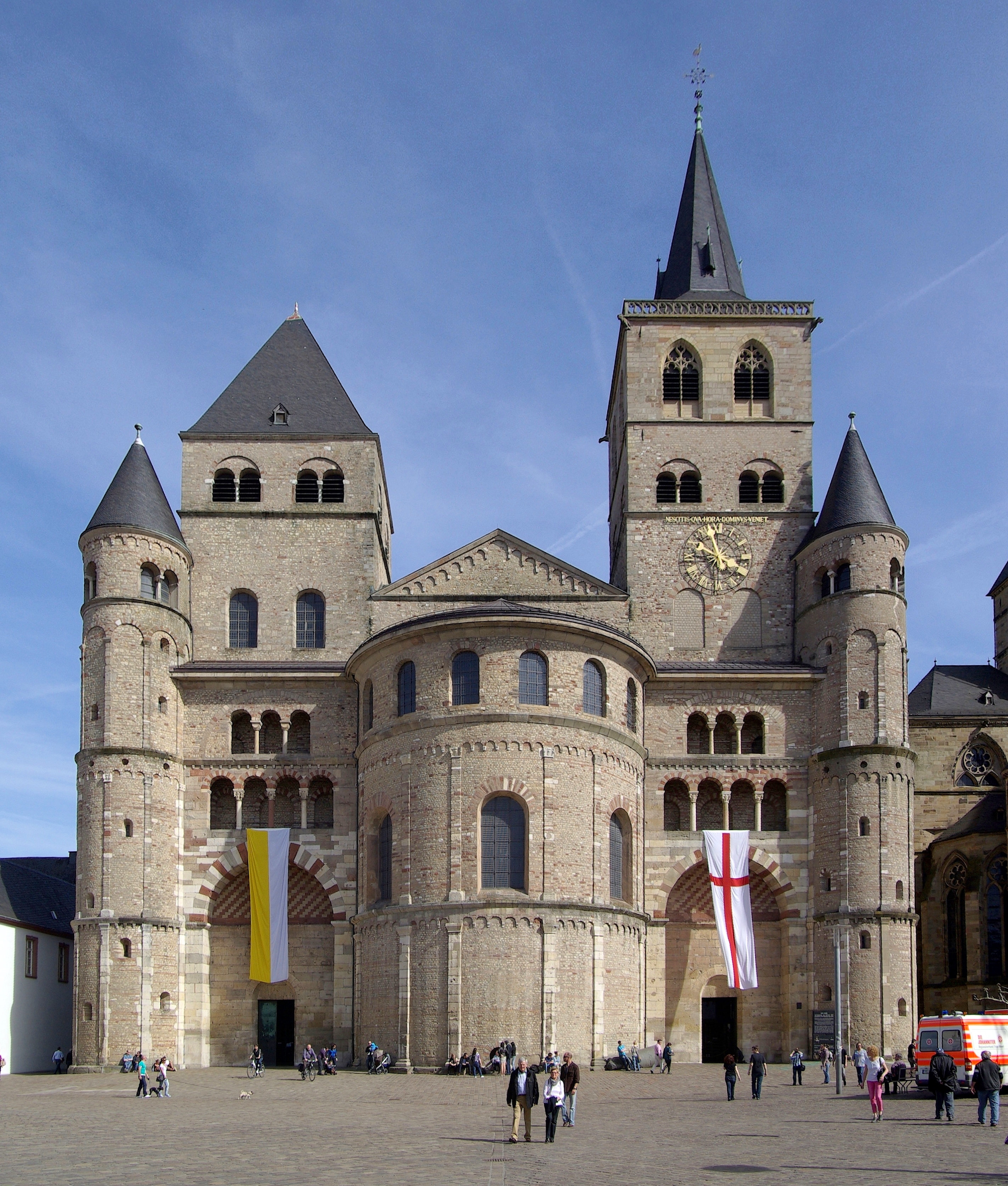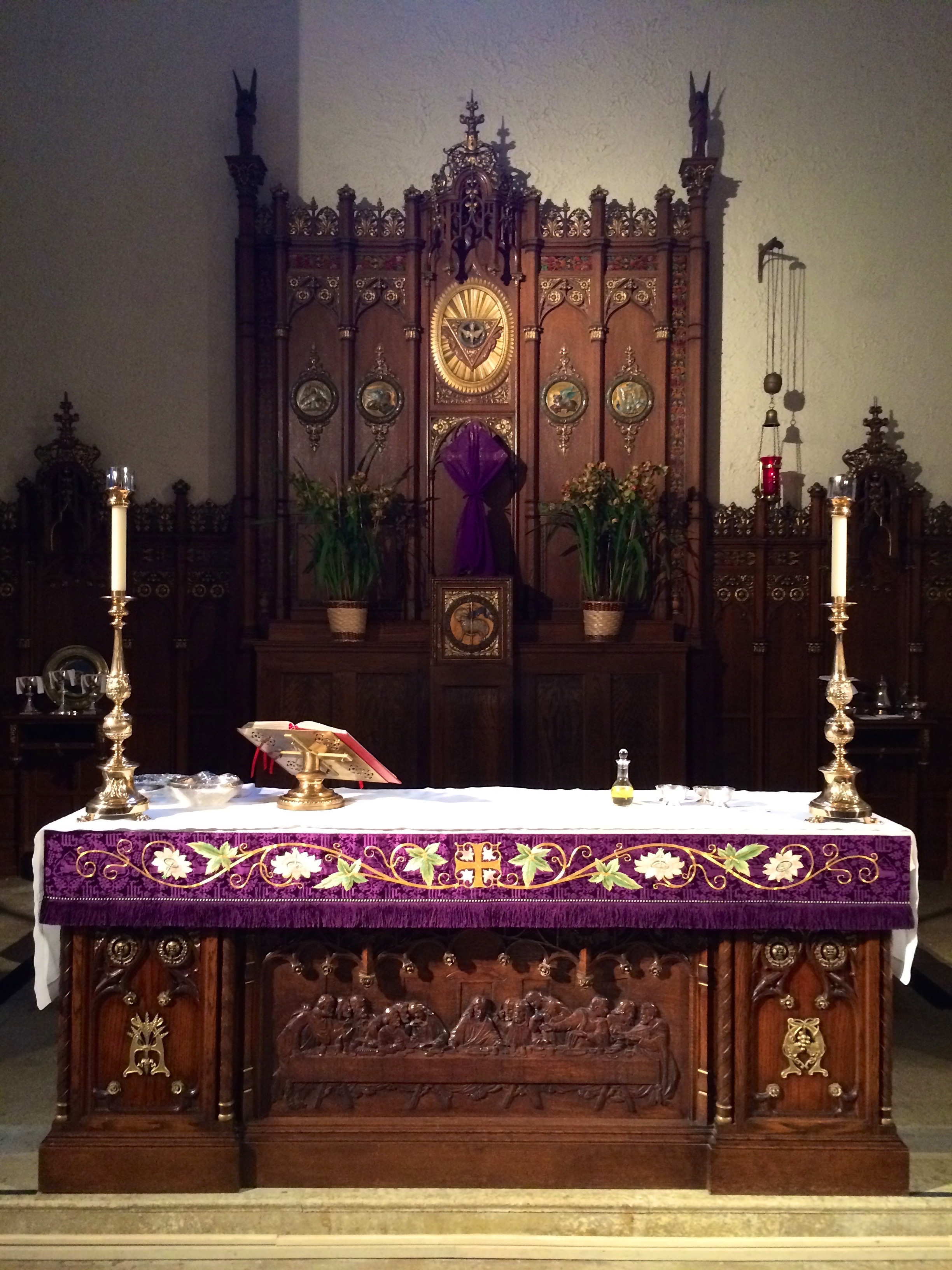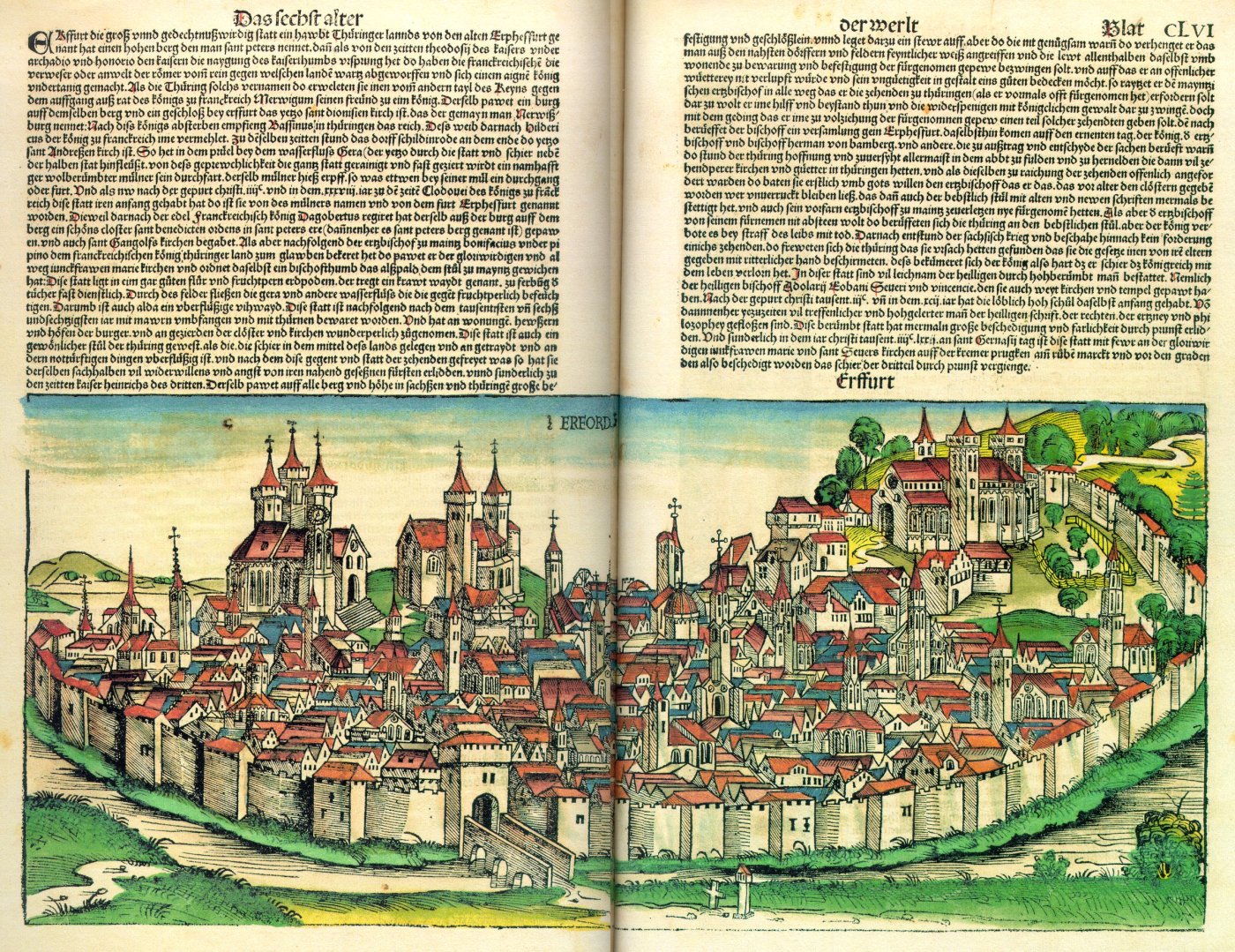|
Arnold II Of Isenburg
Arnold II of Isenburg (–1259) was Archbishop of Trier from 1242 to his death. A long-time member of the cathedral chapter in Trier, he held several provostships before being elected as archbishop, succeeding his uncle Theoderich von Wied. The election was controversial, and king Conrad IV of Germany granted the regalia to Rudolf de Ponte, the opposing candidate, instead. A short military conflict ensued, and the dispute ended after Rudolf's death when Arnold was confirmed as archbishop by Pope Innocent IV and consecrated in 1245. Arnold opposed Conrad and the Hohenstaufen claim to the throne, and elected Henry Raspe and later William II of Holland as German anti-kings. During his reign, he fortified several towns and built various castles. He died in Montabaur in early November 1259 and is buried in Trier Cathedral. Early life and career Arnold was born into one of the most significant noble families of the Westerwald region. His father was and his mother was Theodora v ... [...More Info...] [...Related Items...] OR: [Wikipedia] [Google] [Baidu] |
2018 Trier, Domschatzkammer, Bisschofsstab Arnold II Von Isenburg 1
Eighteen or 18 may refer to: * 18 (number) * One of the years 18 BC, AD 18, 1918, 2018 Film, television and entertainment * ''18'' (film), a 1993 Taiwanese experimental film based on the short story ''God's Dice'' * ''Eighteen'' (film), a 2005 Canadian dramatic feature film * 18 (British Board of Film Classification), a film rating in the United Kingdom, also used in Ireland by the Irish Film Classification Office * 18 (''Dragon Ball''), a character in the ''Dragon Ball'' franchise * "Eighteen", a 2006 episode of the animated television series ''12 oz. Mouse'' Science * Argon, a noble gas in the periodic table * 18 Melpomene, an asteroid in the asteroid belt Music Albums * ''18'' (Moby album), 2002 * ''18'' (Nana Kitade album), 2005 * '' 18...'', 2009 debut album by G.E.M. * ''18'' (Jeff Beck and Johnny Depp album), 2022 Songs * "18" (5 Seconds of Summer song), from their 2014 eponymous debut album * "18" (One Direction song), from their 2014 studio album ''Four'' * ... [...More Info...] [...Related Items...] OR: [Wikipedia] [Google] [Baidu] |
Konrad Von Hochstaden
Konrad von Hochstaden (or Conrad of Hochstadt) (1198/1205 – 18 September 1261) was Archbishop of Cologne from 1238 to 1261. Konrad was a son of Count Lothar of Hochstadt, canon of St. Maria ad Gradus and of the old Cologne Cathedral, and Mathilde of Vianden. His date of birth is unknown, and nothing is known of his early youth. In 1216, he became incumbent of the parish of Wevelinghoven near Düsseldorf; in 1226 he was canon and, some years later, provost of the cathedral of Cologne. After the death of Heinrich von Müllenark (26 March 1238) the cathedral chapter elected Konrad Archbishop of Cologne. He received the archiepiscopal insignia from the Emperor Frederick II at Brescia in August of the same year. The following year, on 28 October, he was ordained priest and consecrated archbishop by Ludolf von Holte, Bishop of Münster. For the first few months of his reign, the new archbishop sided with the emperor in his conflict with Pope Gregory IX, but for unknown reasons w ... [...More Info...] [...Related Items...] OR: [Wikipedia] [Google] [Baidu] |
Henry V, Count Of Luxembourg
Henry V the Blondell (1216 – 24 December 1281), called the Great, was the Count of Arlon from 1226 to his death, Lord of Ligny from 1240 to his death, Count of Luxembourg and Laroche from 1247 to his death, and the Marquis of Namur between 1256 and 1264 as Henry III. He was the son and successor of Waleran III, Duke of Limburg and Ermesinde, Countess of Luxembourg. Reign In 1226, following the death of his father Waleran III, Henry inherited the county of Arlon. In 1240 Henry married Margaret, daughter of Henry II of Bar and Philippa of Dreux. Henry's marriage to Margaret brought him Ligny-en-Barrois as her dowry, though, by a clause in the marriage contract, it remained under the feudal suzerainty of the County of Bar. In contempt of this, Henry paid homage in 1256 to King Theobald II of Navarre in the latter's capacity as Count of Champagne. Henry's brother-in-law Count Theobald II of Bar took advantage of the conflict then raging between Duke Frederick III of Lorra ... [...More Info...] [...Related Items...] OR: [Wikipedia] [Google] [Baidu] |
Lent
Lent (, 'Fortieth') is the solemn Christianity, Christian religious moveable feast#Lent, observance in the liturgical year in preparation for Easter. It echoes the 40 days Jesus spent fasting in the desert and enduring Temptation of Christ, temptation by Satan, according to the Gospels of Gospel of Matthew, Matthew, Gospel of Mark, Mark and Gospel of Luke, Luke, before beginning his Ministry of Jesus, public ministry. Lent is usually observed in the Catholic Church, Catholic, Lutheranism, Lutheran, Moravian Church, Moravian, Anglican Communion, Anglican, United and uniting churches, United Protestant and Eastern Orthodoxy, Orthodox Christian traditions, among others. A number of Anabaptism, Anabaptist, Baptists, Baptist, Methodism, Methodist, Calvinism, Reformed (including certain Continental Reformed Protestantism, Continental Reformed, Presbyterianism, Presbyterian and Congregational church, Congregationalist churches), and Nondenominational Christianity, nondenominational Ch ... [...More Info...] [...Related Items...] OR: [Wikipedia] [Google] [Baidu] |
Frederick II, Holy Roman Emperor
Frederick II (, , , ; 26 December 1194 – 13 December 1250) was King of Sicily from 1198, King of Germany from 1212, King of Italy and Holy Roman Emperor from 1220 and King of Jerusalem from 1225. He was the son of Emperor Henry VI, Holy Roman Emperor, Henry VI of the Hohenstaufen dynasty (the second son of Emperor Frederick Barbarossa) and Queen Constance I of Sicily of the Hauteville dynasty. Frederick was one of the most powerful figures of the Middle Ages and ruled a vast area, beginning with Sicily and stretching through Italy all the way north to Germany. Viewing himself as a direct successor to the Roman emperors of antiquity, he was Holy Roman Emperor, Emperor of the Romans from his papal coronation in 1220 until his death; he was also a claimant to the title of King of the Romans from 1212 and unopposed holder of that monarchy from 1215. As such, he was King of Germany, King of Italy, of Italy, and King of Burgundy, of Burgundy. At the age of three, he was crowned King ... [...More Info...] [...Related Items...] OR: [Wikipedia] [Google] [Baidu] |
Koblenz
Koblenz ( , , ; Moselle Franconian language, Moselle Franconian: ''Kowelenz'') is a German city on the banks of the Rhine (Middle Rhine) and the Moselle, a multinational tributary. Koblenz was established as a Roman Empire, Roman military post by Nero Claudius Drusus, Drusus . Its name originates from the Latin ', meaning "(at the) confluence". The actual confluence is today known as the "Deutsches Eck, German Corner", a symbol of the unification of Germany that features an Emperor William monuments, equestrian statue of Emperor William I. The city celebrated its 2,000th anniversary in 1992. The city ranks as the third-largest city by population in Rhineland-Palatinate, behind Mainz and Ludwigshafen am Rhein. Its usual-residents' population is 112,000 (). Koblenz lies in a narrow flood plain between high hill ranges, some reaching mountainous height, and is served by an express rail and autobahn network. It is part of the populous Rhineland. Name Historic spellings include ... [...More Info...] [...Related Items...] OR: [Wikipedia] [Google] [Baidu] |
Erfurt
Erfurt () is the capital (political), capital and largest city of the Central Germany (cultural area), Central German state of Thuringia, with a population of around 216,000. It lies in the wide valley of the Gera (river), River Gera, in the southern part of the Thuringian Basin, north of the Thuringian Forest, and in the middle of a line of the six largest Thuringian cities ('':de:Thüringer Städtekette, Thüringer Städtekette''), stretching from Eisenach in the west, via Gotha, Erfurt, Weimar and Jena, to Gera in the east. Together with Kassel and Göttingen, it is one of the cities with more than 100,000 inhabitants lying closest to the geographic centre of Germany. Erfurt is south-west of Leipzig, north-east of Frankfurt, south-west of Berlin and north of Munich. Erfurt's old town is one of the best preserved medieval city centres in Germany. The Gera (river), Gera is spanned by the Krämerbrücke, Merchants' Bridge (''Krämerbrücke''), one of the rare bridges with ho ... [...More Info...] [...Related Items...] OR: [Wikipedia] [Google] [Baidu] |
Erfurt Cathedral
Erfurt Cathedral (, officially ''Hohe Domkirche St. Marien zu Erfurt'', English: Cathedral Church of St Mary at Erfurt), also known as St Mary's Cathedral, is the largest and oldest church building in the Thuringian city of Erfurt, central Germany. It is the episcopal seat of the Roman Catholic Diocese of Erfurt. The cathedral was mainly built in the International Gothic style and is located on a hillside overlooking the main town square (, Cathedral Square), directly next to St Severus' Church. As a unique architectural ensemble, both churches together form the city's landmark. Former German names include and . History The site of the present cathedral has been the location of many other Christian buildings, for example a Romanesque basilica and a church hall. In 742, Saint Boniface erected a church on the mound where Erfurt Cathedral is now sited. In the mid-12th century, the foundations of the original church were used for a Romanesque basilica. In the earl ... [...More Info...] [...Related Items...] OR: [Wikipedia] [Google] [Baidu] |
Basilica Of St
In Ancient Roman architecture, a basilica (Greek Basiliké) was a large public building with multiple functions that was typically built alongside the town's Forum (Roman), forum. The basilica was in the Latin West equivalent to a stoa in the Greek East. The building gave its name to the ''basilica'' architectural form. Originally, a basilica was an ancient Roman architecture, ancient Roman public building, where courts were held, as well as serving other official and public functions. Basilicas are typically rectangular buildings with a central nave flanked by two or more longitudinal aisles, with the roof at two levels, being higher in the centre over the nave to admit a clerestory and lower over the side-aisles. An apse at one end, or less frequently at both ends or on the side, usually contained the raised Tribune (architecture), tribunal occupied by the Roman magistrates. The basilica was centrally located in every Roman town, usually adjacent to the forum and often opp ... [...More Info...] [...Related Items...] OR: [Wikipedia] [Google] [Baidu] |
Dietkirchen
Dietkirchen an der Lahn is a borough (''Ortsbezirk'') of Limburg an der Lahn, seat of the district of Limburg-Weilburg in the state of Hesse, Germany. The formerly independent village was incorporated into Limburg in 1971. The town is dominated by the basilica St. Lubentius, Dietkirchen, St. Lubentius, which was the most important early-medieval church building in the region. Geography Dietkirchen is situated directly on the west (left) bank of the Lahn River. Its prominent feature is the towering limestone bluff on which St. Lubentius, Dietkirchen, St. Lubentius is built. The central town of Limburg is located in a widening of the Lahn valley. Dietkirchen is situated at the eastern end of this widening, with the valley becoming narrow again near Runkel. The old village is characterized by a large height differential, with housing plots situated on Terrace (agriculture), terraces formed by numerous retaining walls. The village itself is situated at an elevation of 120 to 170 met ... [...More Info...] [...Related Items...] OR: [Wikipedia] [Google] [Baidu] |
Archdeacon
An archdeacon is a senior clergy position in the Church of the East, Chaldean Catholic Church, Syriac Orthodox Church, Anglican Communion, St Thomas Christians, Eastern Orthodox Church, Eastern Orthodox churches and some other Christian denominations, above that of most clergy and below a bishop. In the High Middle Ages it was the most senior diocesan position below a bishop in the Catholic Church. An archdeacon is often responsible for administration within an archdeaconry, which is the principal subdivision of the diocese. The ''Oxford Dictionary of the Christian Church'' has defined an archdeacon as "A cleric having a defined administrative authority delegated to him by the bishop in the whole or part of the diocese.". The office has often been described metaphorically as ''oculus episcopi'', the "bishop's eye". Catholic Church In the Latin Catholic Church, the post of archdeacon, originally an ordained deacon (rather than a priest), was once one of great importance as a sen ... [...More Info...] [...Related Items...] OR: [Wikipedia] [Google] [Baidu] |
Electorate Of Trier
The Electorate of Trier ( or '; ) was an Hochstift, ecclesiastical principality of the Holy Roman Empire that existed from the end of the 9th to the early 19th century. It was the temporal possession of the prince-archbishop of Trier (') who was, ''ex officio'', a prince-elector of the empire. The other ecclesiastical electors were the archbishops (in the secular context called simply electors) of Electorate of Cologne, Cologne and Electorate of Mainz, Mainz. The capital of the electorate was Trier; from the 16th century onward, the main residence of the Elector was in Koblenz. The electorate was secularized in 1803 in the course of the German mediatisation. The Elector of Trier, in his capacity as archbishop, also administered the Roman Catholic Diocese of Trier, Archdiocese of Trier, whose territory did not correspond to the electorate (see map below). History Middle ages Trier, as the important Roman provincial capital of ', had been the seat of a bishop since Roman tim ... [...More Info...] [...Related Items...] OR: [Wikipedia] [Google] [Baidu] |






